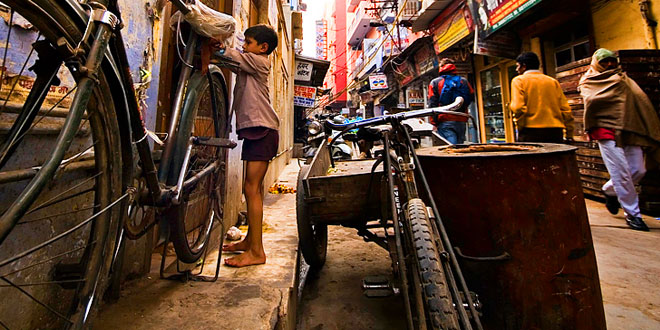Question: “The function and the shape of the family were completely transformed by life in the industrial city”. Explain by giving examples.
Answer:
- Family In the 18th century: In the 18th century, (under proto- industralisation) the family had been a unit of production and consumption as well as of political decision making
- Family under industrialization: Ties between members of households loosened, and among the working class the institution of marriage tended to break down. Women of the upper and middle daises in Britain, on Use other hand, fared increasingly higher levels of isolation, although their Lives were made easier by domestic maids who cooked, cleaned and cared for young children on low wages.
- Individualism: The city no doubt encouraged a new spirit of individualism among both men and women, and a freedom from the collective values that were a feature of the smaller rural communities
- Family and role of women: Men and women did not have equal access to this new urban space As women lost their industrial jobs and conservative people railed again?: their presence in public spaces women were forced to withdraw into their homes. The public space became increasingly a male preserve, and the domestic sphere was seen as the proper place for women Most political movements of the nineteenth centuiy. such as Chartism (a movement demanding the vote for all adult males) and the 10-hour movement (limiting hours of work in factories), mobilized large number of men Only gradually did women come to participate in political movements for suffrage that demanded the right to vote for women or for named women’s right to property.
- Family and market: By the 20th century family now consisted of much smaller units but it became the heart of new market of goods and services and of ideas.
Question: When and where was the very first section of the underground railway in the world opened? Describe in brief the difficulties of travelling in that underground railway?
Answer: The first section of the underground railway: n the world was opened on 10th January, 1863 between Paddington and Farrington street in London.
- People were afraid to travel under ground.
- The compartments were overcrowded and polluted by smoke.
- The atmosphere was a mixture of sulphur, coal and dust with foul fumes from the gas lamps.
- Many felt that the iron monsters added to the mess and unhealthiness of the city,
- Suffocation due to lack of oxygen supply and heat.
Question: ‘The London underground railway eventually became a huge success.’ Explain.
Or
How far was underground railway able to solve transport problems as well as housing crisis in London in nineteenth century?
Answer:
- By 1880 the expanded train service was carrying about 40 million passengers a year.
- By the 20th century most of large metropolises such as New York, Tokyo, etc. built underground railway.
- Population in the city became more dispersed as now it was easy to travel.
- The new transport system broke down social distinctions.
- The severe housing shortage problems of London to some extent were solved
Question: What were the sources of leisure for the London city life?
Or
What was the tradition of ‘London Season’? Explain different forms of entertainment that came up in 19th century England to provide leisure activities for the people?
Or
What forms of entertainment came up in the 19th century in England to provide leisure activities?
Or
Mow did the people entertain themselves in their leisure time in urban Britain in the 19th century?
Or
How did the people of all classes entertain themselves in their leisure time in Urban Britain after industrialization?
Answer:
- London Season: For wealthy Britishers there had long been an annual ‘London Season. Several cultural events, such as the opera, the theatre and the classical music performances were organised for an elite group of 300-400 families in the late eighteenth century.
- Pleasure gardens: Pleasure gardens came in the 19th century to provide facilities for sports,entertainment and refreshments for the well-to-do.
- Pubs for working class: Working classes met in pubs to have a drink: exchange news and sometimes, also to organise for political action.
- Libraries and museums: Libraries, art galleries and museums were established in the nineteenth century to provide people with a sense of history and pride in the achievements of the British.
- Music halls and cinemas: Music hails were popular among the lower classes and, by the early twentieth century, cinema became the great mass entertainment for the mixed audiences
- Beaches: British industrial workers were increasingly encouraged to spend their holidays by the sea. so as to derive the benefits of the sun and the bracing winds
Question: Explain the lifestyle of workers of mid-nineteenth century in Britain.
Answer:
- Seasonal work: In most of the industries, the demand for labour was seasonal. The actual possibility of getting a job depended on existing networks of friendship and kin relations.
- Low wages: The workers were getting very low wages.At the best of times till the mid-nineteenth century, about 10% of the population was extremely poor.
- Women workers: Factories employed large number of women. With technological development women gradually lost their industrial jobs.
- Problem of Housing: Most of the workers were living in slums. Factory or workshop owners did not house the migrant workers,
- Source of Fun and Leisure: For the poor workers the streets often were the only place for rest, leisure and fun. The working poor created spaces of entertainment wherever they lived.
 Class Notes NCERT Solutions for CBSE Students
Class Notes NCERT Solutions for CBSE Students





